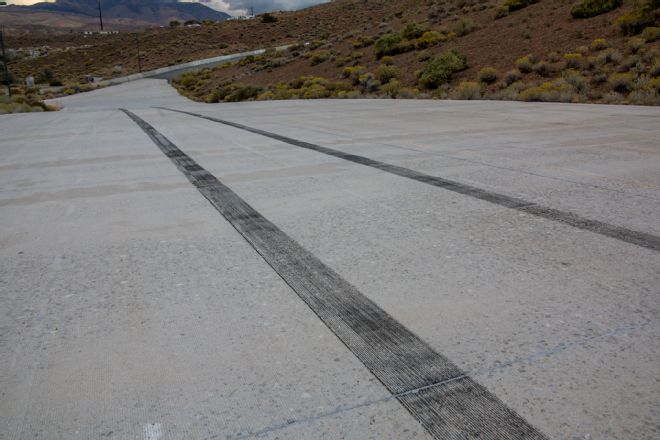
 Harry Wagner
Contributor
Harry Wagner
Contributor
Brakes are an often-overlooked component on Jeeps, but they shouldn’t be. Along with steering, brakes are the most critical component on any vehicle driven on the street. We often upgrade steering systems with hydraulic ram assist and heavy-duty tie rods, but the braking system is ignored. Larger rotors and calipers are often part of an upgrade to one-ton axles, where the goal is increased strength to live with large tires. Brakes are a system though, and larger calipers often require a different master cylinder that moves more fluid, along with the proper booster, residual valve, and pedal ratio.
That was more than we were looking for on our LJ Rubicon project, though. We just wanted to regain some of the braking power that was lost when we upgraded to 35-inch Toyo Open Country M/Ts on AEV Pintler wheels. You may recall (“What concessions are made when adding big tires?") that the new tire and wheel combo is 40 pounds heavier at each corner and that extra rotating weight increased our 60-0 braking distance from 137 feet to 218 feet. That extra distance is equal to at least a couple busses full of nuns.
Fortunately, EBC had a solution (as it does with a number of Jeep models) with its high performance replacement Heavy Duty Orange brake pads and Ultimax USR slotted rotors. The Heavy Duty Orange pads have increased friction when compared to stock pads, with a broad temperature range for safe stopping in a wide variety of conditions—or, in our case, stopping big, heavy mud-terrain tires. The Ultimax USR rotors are made from high-quality gray iron to exacting standards and slotted to provide improved outgassing and keep the pads from glazing. The discs come with a long-lasting corrosion-resistant Nitrotherm coating that uses warm nitrogen to produce the black finish. While the finish is swept away from the rotor surface, it does an excellent job keeping the rest of the rotor corrosion free, particularly where the wheels bolt on to the brakes.
The EBC parts bolted on easily in under an hour with minimal tools. The hardest part was getting the 106-pound tire and wheel off and back on at each corner. We performed the installation on a lift since the brakes were installed at the same time as other components, but this is an installation that could easily be handled in the driveway during an afternoon. We didn’t get back everything we had lost with the larger, heavier tires, but for the cost of a little coin and a few hours, we were able to decrease our average braking distance by more than 20 feet. There should be more braking efficiency gained in the future once the pads are fully bedded, and we’ll report back on that in our next installment in which we add an intake, programmer, and exhaust to regain lost acceleration.
Which Pads?
A pad designed to withstand the continuous heat of a racetrack is not going to offer long life and low dust. EBC offers more than half a dozen different brake pad options, each with a specific purpose. For Jeeps, choices include EBC’s Greenstuff 6000, Yellowstuff, Greenstuff 7000, and Extra Duty Orange.
Greenstuff 6000- Moderate improvement over stock at economical price
Yellowstuff- Designed for heavy loads and towing
Greenstuff 7000- Moderate improvement with lowest dust.
Extra Duty Orange- High brake efficiency and long life
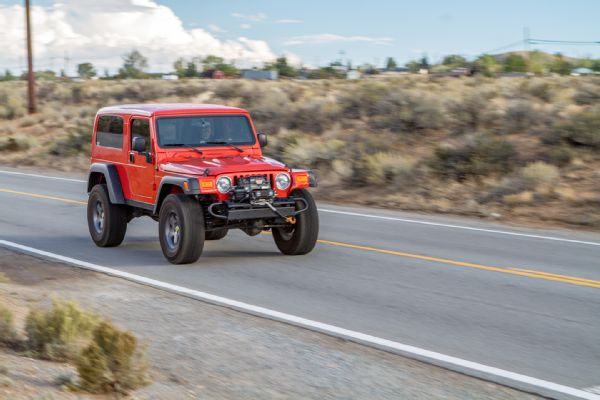
How To Bed Your EBC Brake Pads
In order to get the most out of your brakes, it takes more work than just slapping some new pads on and driving away. The pads must “bed” into the rotors after pads make complete contact across the rotor face. This may take up to 200 miles of light driving, with care taken due to increased braking distances. After full-width contact is attained, make 10 stops in steps from 60 mph to 10 mph in succession, with a deliberate attempt to get the brakes hot to the point of fading. Then coast the vehicle for a mile to allow the rotors to cool.
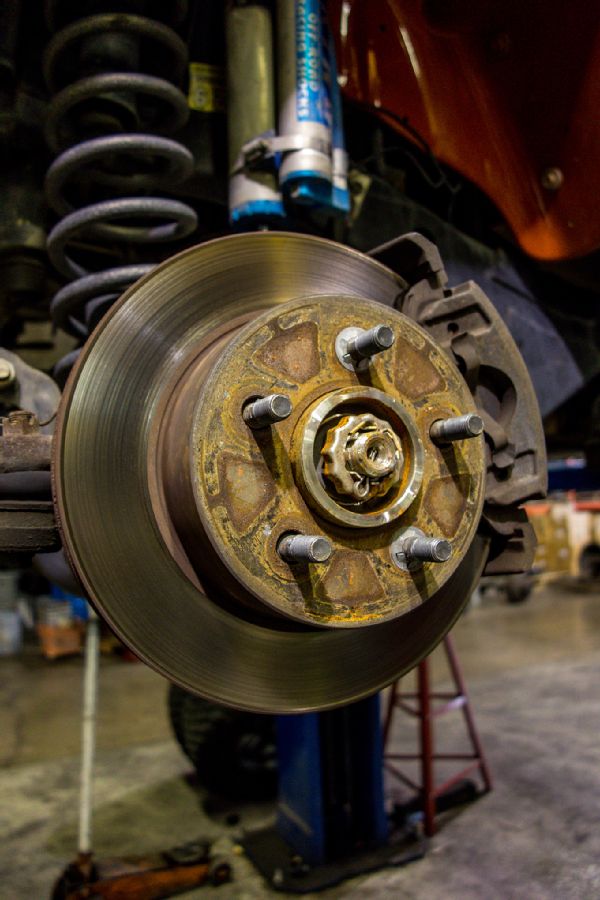
The stock brakes were adequate on our LJ Wrangler with the stock-sized tires, but after upgrading to 35-inch Toyo Open Country M/T tires, the brakes left something to be desired.
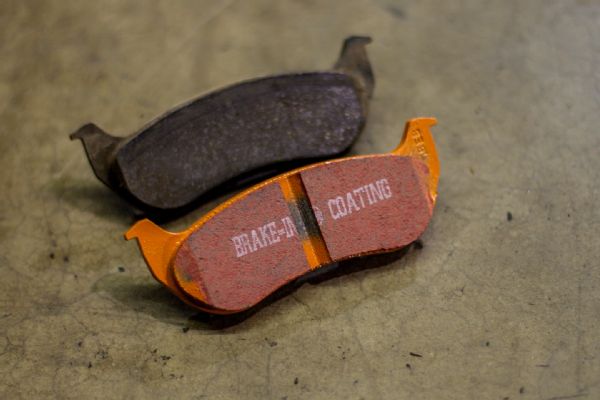
In addition to providing better braking, the EBC Heavy Duty Orange brake pads also last longer than stock pads and have minimal brake dust. This is the best for all possible situations, at a very reasonable price.
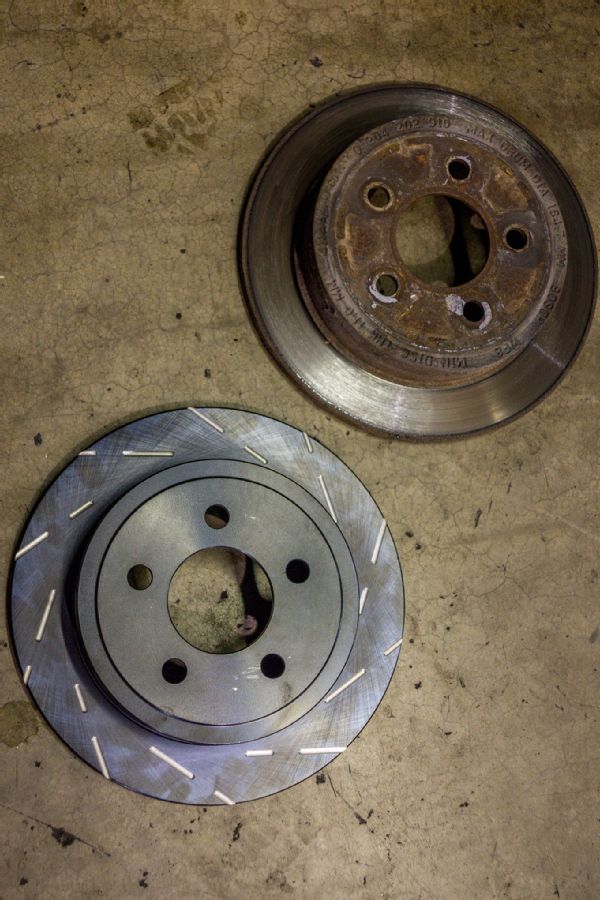
The EBC Ultimax USR slotted rotors are precision machined in the UK. While this is “overseas,” it’s British quality control, not … well, you know. The EBC rotors are 100 percent run-out inspected to a maximum of four-thousandths of an inch total indicator reading. Note how the rotors are marked right and left with the slots oriented to sweep across the brake pad.
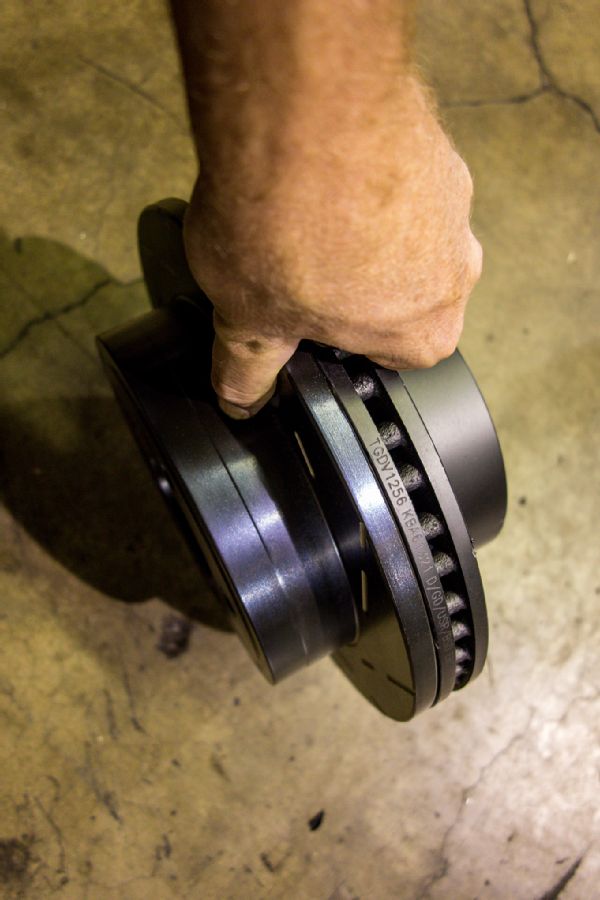
Front discs do most of the work when you hit the brakes because the vehicle’s weight transfers forward. For this reason, the front Ultimax USR slotted rotors are vented to resist fading while the rear brake rotors can get away with being solid.
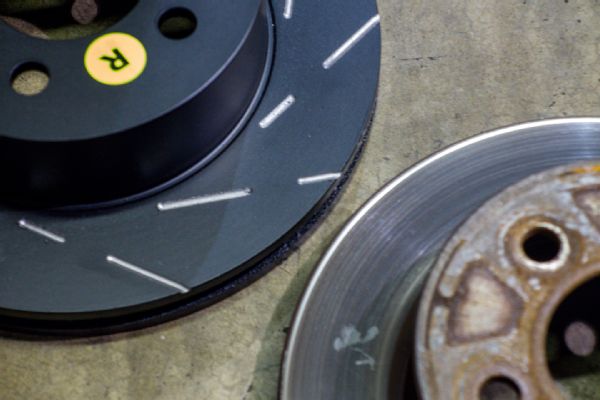
The EBC Ultimax USR rotors are slotted to allow hot gases to escape from between the pad and the rotor. These gases prevent full contact of the pad and diminish braking power. Some rotors are drilled all of the way through, but that can trap debris and the holes can lead to cracks if the brakes are overheated.
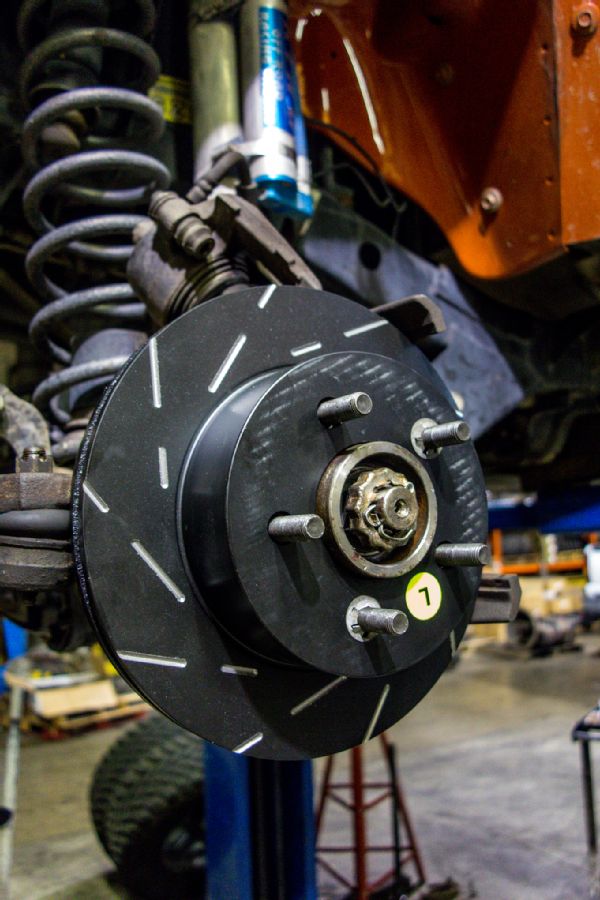
Installation is a bolt-on affair. The calipers can be removed with an Allen wrench for the caliper pins, and then the rotor just slides off once the retaining clips are removed from the lug studs. Older Jeeps with fixed spindles instead of unit bearings offer a more challenging installation.
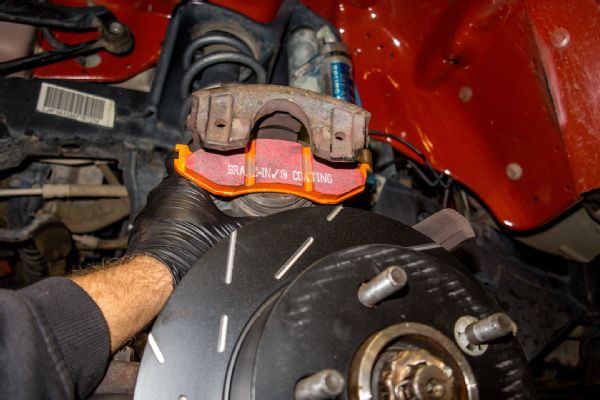
Note the slots on the EBC Extra Duty Orange pads that vent and remove dirt, dust, and debris to cool the center area of the pad. The break-in coating has to be completely worn down before the brakes are 100 percent effective. This can take several hundred miles, so plan your Jeep usage according.
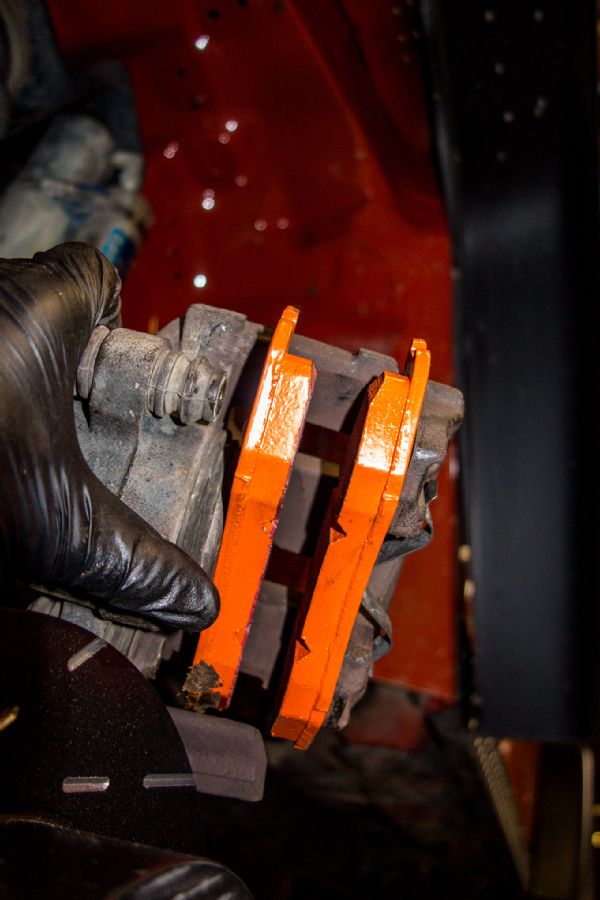
The new thicker EBC Extra Duty Orange brake pads required us to depress each brake caliper piston into its bore to slide the caliper over the new Ultimax USR slotted rotor. We didn’t crack open the brake fluid, but depressing the caliper piston did require us to initially pump the brakes several times in order to return the piston to its proper location.
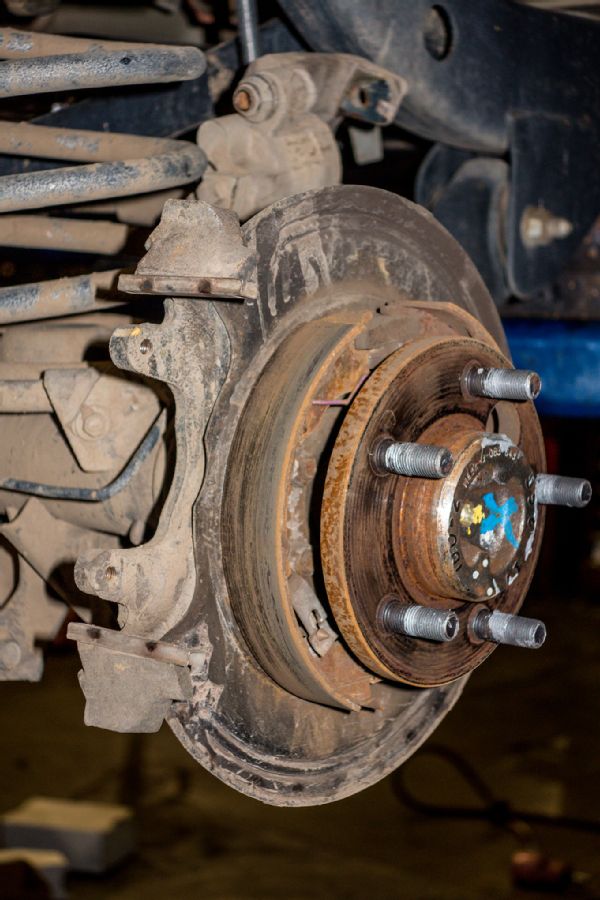
The parking brake on our LJ consists of a small drum inside of the rear rotor. Since these drum shoes only make contact when the vehicle is at a standstill, they virtually never wear out, and we didn’t change them. You will not be able to remove the rear discs if the parking brake is set.
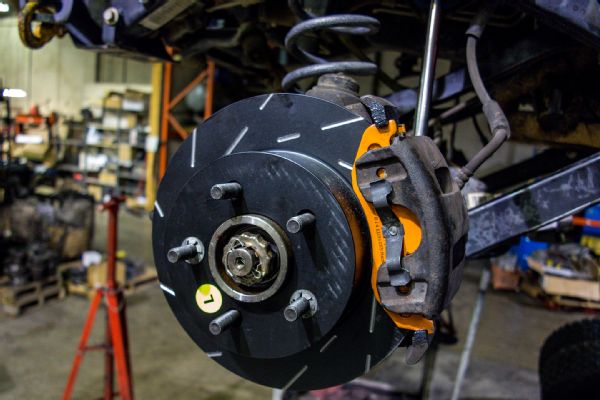
Once the brakes were installed, we were ready to bolt our tires and wheels back on. EBC includes grease for the caliper pins to ensure that they are functioning correctly, but unlike some other brakes, EBC pads don’t need any additional treatment to keep them from squealing.
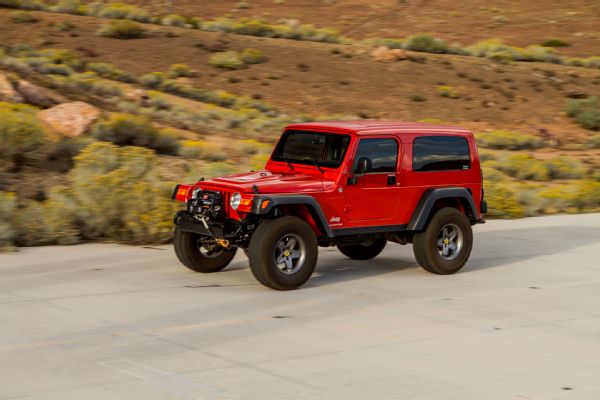
We initially put as many gentle miles on our Jeep as we had time for prior to performing our 60-0 brake distance testing in the same location we had done our previous tests.
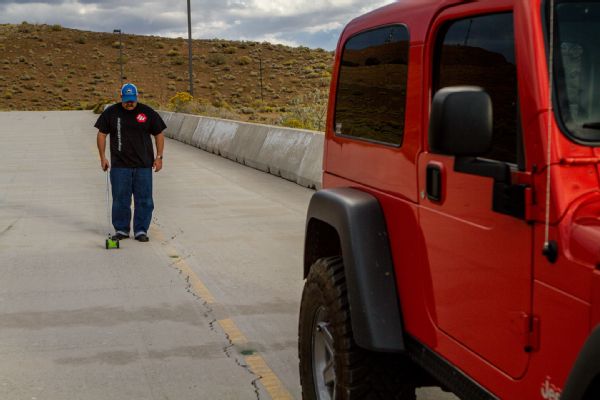
Even without the brake pads fully broken in and operating at maximum efficiency, we still saw approximately a 10 percent improvement in braking distances. We will report back again once we have more miles on the EBC Extra Duty Orange pads and Ultimax USR slotted rotors.